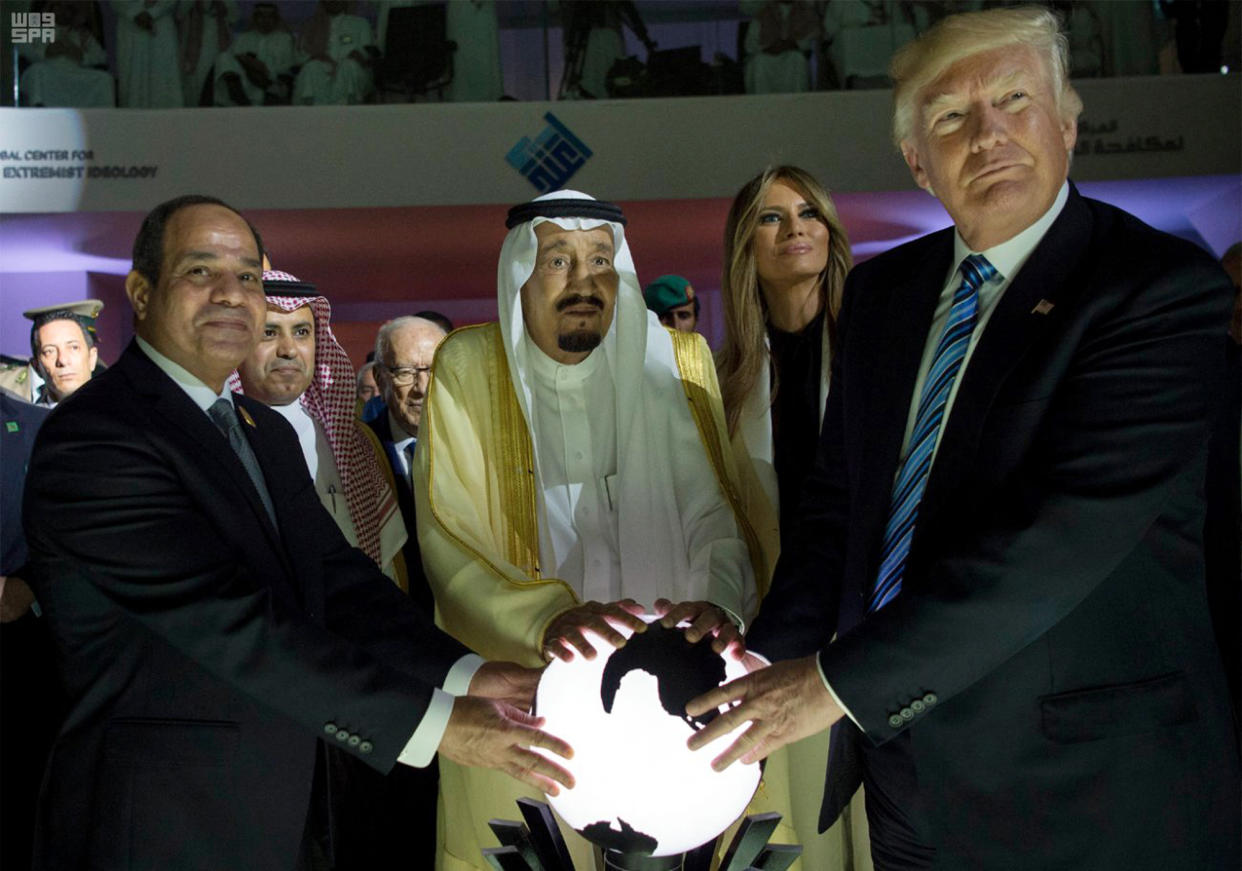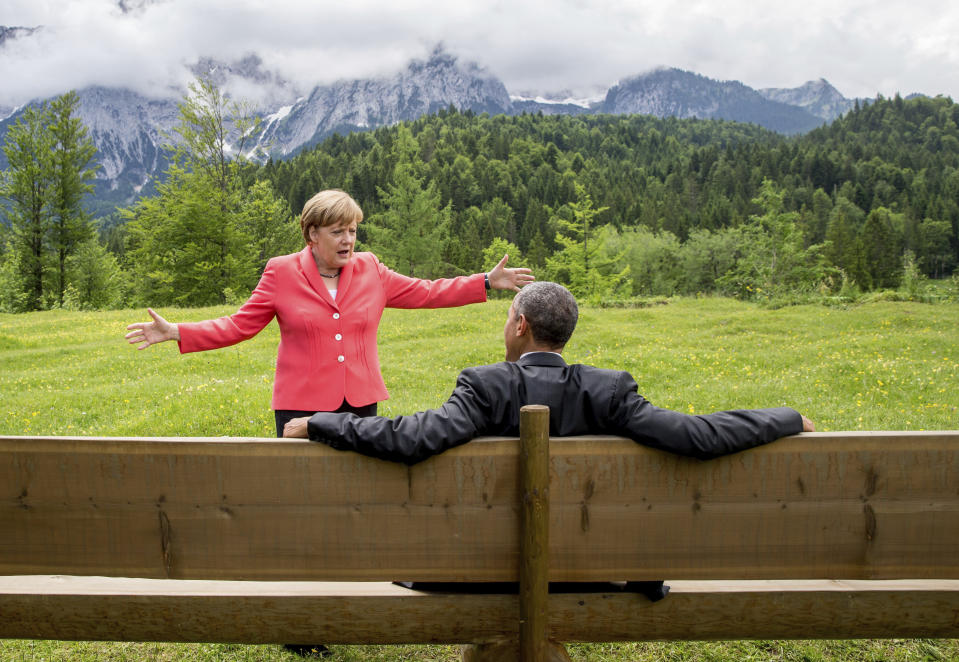How a president's foreign trip comes together

WASHINGTON — Even in the era of cellphones, email, social media and other high-tech forms of instant long-distance communication, presidential travel abroad plays a critical role in U.S. foreign policy. In advance of President Trump’s November trip to Japan, South Korea, China, Vietnam and the Philippines, Yahoo News spoke to Steve Atkiss, a veteran of the George W. Bush administration, on the hidden complexities, opportunities and pitfalls of arranging a president’s overseas voyage.
In an interview with Yahoo News on SiriusXM’s POTUS Channel 124, Atkiss described some of the unwritten rules and logistical challenges that come with accepting the invitation of a foreign president, prime minister, prince or potentate.
At the outset, he said, senior officials from the relevant embassy and the National Security Council look at the policy message the president wants to send, and then “start fleshing out kind of basic ideas for what will be included in a visit.”
“The usual options are out there — the formal speech, the bilateral meetings, you know, dinners and lunches, addresses to Parliament, the cultural things to show American interest and cultural sensitivity,” Atkiss said.
“Really, a month in advance is where the rubber meets the road, where a team of individuals from various organizations — White House staff, the White House Military Office, the Secret Service, and always accompanied with diplomats from our local embassy — arrive in-country and engage in bilateral discussions to start working out exactly what the host country proposes that the president do while he’s there,” he said. “And then a back and forth ensues at that point about, you know, how much time we can commit to what types of things we are and are not interested in.”
Overseas trips are not exceptions to the adage that a White House’s most valuable commodity is the president’ s time.
“Usually with a U.S. president they want more time than we can give,” said Atkiss. “And so it’s always a matter of, ‘OK they want us to spend three nights so that they can have these three dinners, and we’re only willing to spend one night, and so what’s the one dinner you really want to do?’”

The result is a usually diplomatic back and forth.
“Normally, they’re coming with a wish list of a lot of things they want the president to accomplish, and then we’re working to kind of pare that back,” said Atkiss.
One challenge is balancing the demands of a foreign trip with the president’s regular obligations.
“He’s still got to be the commander in chief, and he’s still got to be receiving his daily intel brief, and he’s still got to be handling other issues that are completely unrelated to the reason that he’s in-country visiting,” Atkiss said.
“It’s a matter of, you know, how much can we fit into a day, and what are the things that we want to do vs. the things that they want to do,” he added. “And ultimately we always work those things out and you know have a schedule that everybody’s happy with.”
In addition to logistical challenges like getting the presidential motorcade vehicles overseas and planning where Air Force One will land, there are unwritten rules that shape foreign travel.
Those guidelines are handed down from presidency to presidency by “the foreign policy establishment” that provides a kind of diplomatic institutional memory, explained Atkiss. “And certainly they’re perpetuated by the governments that benefit from that, but there’s also just good reasons for many of them.”
“For example, the president is going to the APEC summit in Vietnam. Well, while you’re over there, doesn’t it makes sense, isn’t it an efficient use of his time — and of money for that matter — while he’s there, to go to China? You can’t go to Asia and not to China. You can’t go to Asia and not go to Japan. You can’t go to Asia and not go to South Korea,” he said.
One recurring challenge emerges from the president’s traveling press corps — known as the travel pool, or protective pool — that follows him. It’s an arrangement largely unknown outside the United States, born of principles rooted in the First Amendment. The pool helps to chronicle the unfolding events, large and small, of a presidency, with the belief that writing history shouldn’t be left only to loyal staffers and government officials. It tries to keep the public informed — where the president is, where the president is going, what the president is doing and saying, how the president is doing, with whom the president is meeting. And it’s designed to tell Americans, and the world, about the president’s whereabouts and well-being in the event of a crisis, and how the president is responding. At its grimmest, it’s sometimes called a “body watch” — the bleak legacy of the assassination of John F. Kennedy and the attempted murder of Ronald Reagan.

Accommodating the travel pool is “just simply something that we build into our discussions about the arrangements for the visit,” said Atkiss.
Some countries “definitely react with surprise that we have a protective pool that travels on Air Force One, that accompanies the president in all of his motorcade movements, that by and large is in the same building, or on the same property that he’s on at all times,” whether they see the president or not, he added.
But ultimately, Atkiss said, “it’s something that’s a requirement for the president when he travels.”
Read more from Yahoo News:



